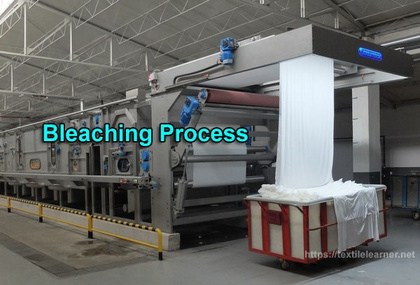
Bleaching
Bleaching of textiles has been practiced for a very long time. Textile bleaching process is a chemical treatment employed for the removal of natural coloring matter from the substrate. The source of natural color is organic compounds with conjugated double bonds, by doing chemical bleaching the discoloration takes place by the breaking the chromophore, most likely destroying the one or more double bonds with in this conjugated system. The material appears whiter after the bleaching. In spite of these processes whiteness would have been impossible without optical brightening agents. However, the degree of whiteness is not only the main criterion bin evaluation of bleaching, but also absorbency.
Purposes of Bleaching Process:
- A high and uniform absorptivity of fabric for water, dyestuffs and finishing agent, achieved by the removal of hydrophobic impurities from the natural fiber.
- A sufficiently high and uniform degree of whiteness, which is stable to storage. The fabric should not be damaged with the degree of polymerization remaining high.
- Of the two methods of bleaching, oxidative and reduction bleaching, the latter processes predominate in the treatment of wool whilst the former process is most frequently used or cotton
Chemical Requirements in Bleaching Process:The oxidation of the impurities and the coloring matters on the surface and in the lumen of the fibers has to be performed at a rate, which is much faster than the rate of the oxidation of the cellulose. The parameters of the bleaching process have to chosen so as to increase the difference between these two rates and to ensure the slowest possible rate of the cellulose oxidation such parameters are the pH, the concentration of the bleaching liquor, the liquor ratio, temperature and the presence of additives such as surfactants, activators and catalysts.
The oxidation of the cellulose, if it could not be avoided, should proceed in such a way as to produce the lowest possible yield of functional groups, calculated on the consumed oxygen. This would be possible if the oxidation could be directed and confined to the chain ends. In this case the oxidation would consume several non numeric units at each chain end and produce soluble products, while the main cellulose chain would not be attacked.
Another requirement is a high consumption of oxygen, that is, a high number of oxygen atoms per chain scission. This would ensure a low degree of degradation and prevention of damage to the fiber.
Of particular importance is a low content of aldehyde and especially “active” aldehyde groups on the bleached fiber, since this would minimize chain scission and dissolution on alkaline laundering and upon mercerization. It would result in little yellowing on laundering and decrease yellowing of the fabric upon storage.
Another important requirement is a low carboxyl group content this would increase the stability of the cellulose on storage that is it would prevent the auto-hydrolysis reaction and the formation of new active aldehyde groups with consequent yellowing and weakening of the fiber.
It should be non-corrosive and not increase the pollution potential of the mill effluents.


